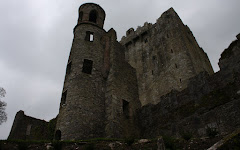Buddhism predominates in Cambodia; it is the official religion and 95% of the population practices it.
As our driver and guide steered us farther afield, away from Siem Reap and Angkor Wat itself, we drove through villages in more rural settings.
At one temple a man selling palm juice prompted our guide to buy us a drink. He remembered fondly how much he had loved it as a boy. Cindy and I sampled it--very sweet and slightly smoky--but were not converted to fan status. Still, I suspect palm juice is the Kool-Aid experience for a multitude of kids in rural Cambodia. Stands in many villages sold palm fruits, palm sugar, and other palm products. We stopped at one stand to watch a woman cook palm juice into palm sugar and then, with the help of friends and family, spoon the sugar into molds. I purchased three tubes of palm sugar--totally biodegradable packaging, no less, as in maybe palm fronds--for us to sample. Now, as for palm sugar, I am fully and most devotedly converted! (It tastes like penuche--a homemade candy my mother sometimes made when I was a girl.)
Tonle Sap is the largest freshwater lake in Southeast Asia, an ecological hot spot designated as a UNESCO biosphere in 1997. It extends from Siem Reap to Phnom Penh. On my first visit to Cambodia ten years ago, I actually journeyed by boat from Siem Reap to Phnom Penh, a chug lasting between five and six hours. It was during the rainy season then (July) and the lake was very full and quite blue. On this trip I visited Tonle Sap in April, near the end of the dry season (November to May): mocha brown lapped at the nethermost expanses of exposed banks of which I had no visual memory. Our guide hired a boat ride for us, and we motored from the pier out to a floating village and then back. Here is a sampling of what we had the chance to witness:





































































